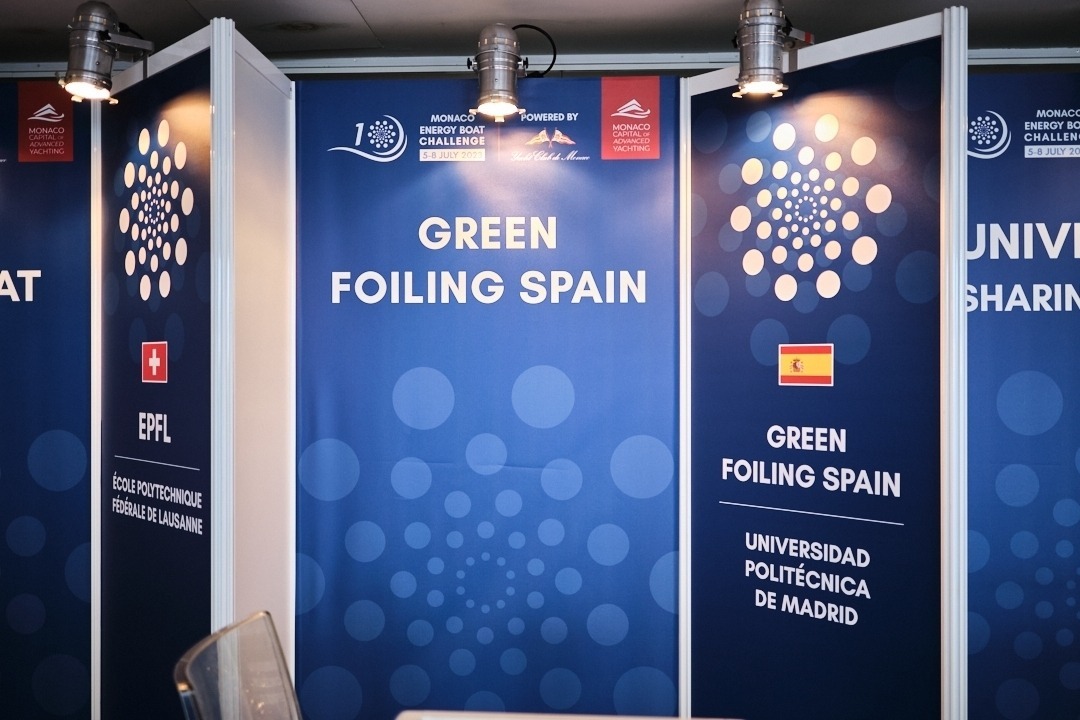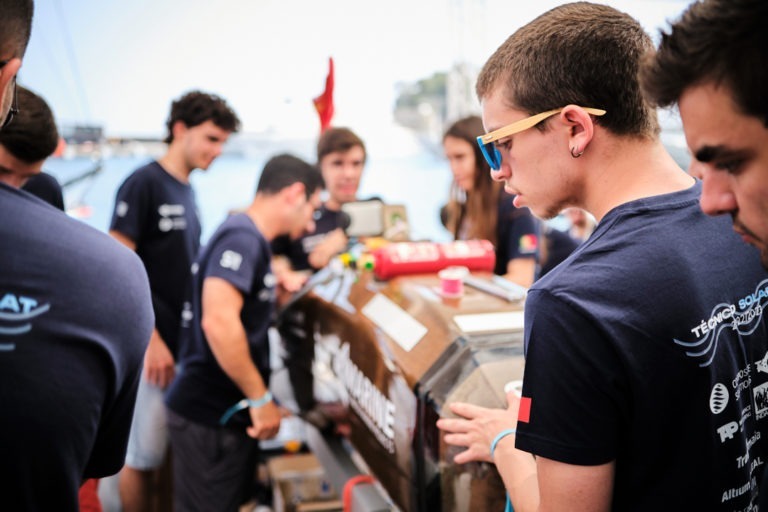Friday 8th July 2022. Third day of the Monaco Energy Boat Challenge saw endurance events and speed records providing a spectacle at sea, while ashore a panel of experts gathered for the 3rd Monaco Hydrogen Working Group Round Table to discuss ‘Unlocking hydrogen barriers in the maritime sector: port regulations & economic viability of projects’. It was organised with Monaco’s Energy Transition Mission, the Prince Albert II of Monaco Foundation and Yacht Club de Monaco.
Today it was the turn of YCM’s Vice-President Pierre Casiraghi, an experienced sailor and founder of Team Malizia, to go into the heart of the Village before boarding Vita Yacht: “Over a 100 years ago the first powerboat races took place in Monaco. I think it’s important to have an event where the latest generation of eco-responsible boats and new propulsion systems can be developed and tested. Thanks to the Monaco Energy Boat Challenge, we can draw attention to the subject: people all over the world are here to compare how their boats perform against other teams. It boosts development of the sector and brings innovations that can then progress to the market”.
Around 15 speakers gathered to take stock of progress in the hydrogen sector, its regulations and finance at the third edition of the round table which “combines private and public players” notes Annabelle Jaeger Seydoux, Director of Monaco’s Energy Transition Mission who opened the discussions.
The market is ripe for exploitation: “Maritime transport represents 2 to 3% of global CO2 emissions. Several avenues are envisaged to decarbonise maritime transport,” says Anne-Marie Perez, Director General of the Capenergies Cluster. “We have solutions based on hydrogen with several vectors: gaseous hydrogen, e-methane, methanol in liquid form and even ammonia (…)”. Europe has also recently relaxed the criteria on correlation between carbon-free production of electricity and hydrogen. “It is a step in the right direction for production of carbon-free hydrogen as projects will be developed more quickly and easily. On the other hand regulations for ports are not really in place and that situation must be improved”.
With regards to deployment of H2 projects, discussions are going well on constructing business models. “Monaco and its neighbouring towns are among destinations that could see hydrogen stations installed,” says Adrien Zanoto, Managing Director of Hydrogen Infrastructure at Hype.
In view of growing demand, there are avenues that could become a reality. “Some 800 owners are currently waiting to move on hydrogen solutions. What’s holding back the final signature on orders is the ability to obtain supplies,” explains Jérémie Lagarrigue, CEO of EODev. Infrastructure is therefore crucial if this ecosystem is to expand, particularly with regards delivery. “We have proposed a floating station and will soon announce a hydrogen framework that will be able to store hydrogen at nearly 700 bar. With this facility, we’ll be able to connect our generators and produce electricity and give a boost to hydrogen mobility,” continues the man who is also Jury president of this 9th Monaco Energy Boat Challenge.
While the light may seem to be green, it’s important to stress that “many technologies already exist and are on the market but now we must move on to the industrialisation phase,” says Maud Augeai, Development Manager France, Lhyfe.
Understanding finance for deploying H2 projects is also key. According to Ivan Pavlovic, Executive Director and expert in the energy transition at Natixis, emerging business and finance models differ depending on whether they are regional or global projects and banks have a different view depending on the project.
“Hydrogen is rightly considered to be a pillar in the energy transition but it is still largely in the maturing phase. The challenges today are two-fold: we must promote its use in those early eligible segments of the economy and work to bring down costs that are still too high”.
The meeting ended with a presentation on case studies and feedback that highlighted concrete advantages, such as the decarbonisation of Barcelona port, and Norway’s example as a leader in supporting new technology like development of hydrogen ecosystems. Jun Olaf Willums, founder of ZEM, member of the Norway Maritime Cleantech Cluster and Chairman of Nordic Batteries discussed how Norwegian shipping companies and clusters are tackling the regulatory and commercial challenges of hydrogen as a fuel: “Currently, most solutions are developed on a case by case basis, depending on the type of ship and the production facilities,” he says.


Cheered on by their teams, each driver headed out to the race area on the sea to start their contests, applauded by an appreciative public on Quai Luciana who had a great view of the action. While the Solar and Energy classes jostled for position on a course in Monaco’s bay as part of their endurance race, the Open Sea Class braved the chop on a 16 nautical mile speed test (Monaco-Ventimiglia-Monaco) won by the English on Vita Lion, followed by Vita Seal then Xshore.
No matter the setting, the goal was the same: adjust the range capability to finish – first if possible. In this game, the Italians on Uniboat, title holders in the Energy Class, narrowly won with 23 laps, just ahead of the Dubai boat Sailing Tigers, then the French on Capgemini Engineering.
In the Solar Class, the Dutch monopolised the endurance contest with victory going to Sunflare Solar Team (winners in the category’s overall ranking in 2021), followed by Solar Boat Twente then Van Hall Larenstein.

Tomorrow the 38 teams have one last chance to show what their boats can do and for the 36 exhibitors to present their projects. From 10.00am the Solar and Energy classes will be out on the water for the slalom course. This is like a one-on-one duel between two boats round a slalom course to see which is the most manoeuvrable and the fastest – a very practical test. At the same time, the Open Sea Class has their endurance challenge where they keep going round a course for as long as possible to demonstrate the boat’s range and energy capacity.
From 2.00pm, the much-anticipated Championship Race takes place in the YCM Marina: two by two after a start given at the foot of the YCM Clubhouse, competitors by class compete in an order determined by their results in the qualifiers on Thursday. Suspense and some fine battles await spectators!
Later in the day, all competitors will attend the prize-giving ceremony where there are five prizes up for grabs:
An agenda not to be missed starts 10.00am when the Village and Paddocks open again before the final curtain falls.
1er : JKU Deep Blue (Croatie)
2e : US National Team (USA)
3e : Club Nàutic Cambrils (Espagne)